Daclatasvir-based
treatment

Andrew Muir speaking at the American Association for the Study of Liver Diseases (AASLD) Liver Meeting. Photo by Liz Highleyman, hivandhepatitis.com.
Daclatasvir is another NS5A inhibitor. It
works in the same way as ledipasvir and is highly potent. Daclatasvir is
already approved in Europe but in the United States, developer Bristol-Myers
Squibb has decided to wait for approval until it has completed studies of
daclatasvir as part of a three-drug, once-daily combination that also includes
the protease inhibitor asunaprevir and the non-nucleoside polymerase inhibitor
beclabuvir.
Bristol-Myers Squibb presented results of two phase III studies of
this combination at The Liver Meeting.
The first study looked at the combination in
202 people with cirrhosis and genotype 1 infection. One group received
ribavirin to see whether it made a substantial difference to cure rates in this
difficult-to-cure group of patients.
In the group of previously untreated people
with cirrhosis, 93% achieved a cure after 12 weeks of treatment and 98%
achieved a cure if the regimen also contained ribavirin. In the group of
treatment-experienced patients, 87% achieved a cure after 12 weeks of treatment
and 93% achieved a cure if the regimen also included ribavirin.
The second study tested the combination in 312
previously untreated and 103 treatment-experienced patients with HCV genotype
1. Ribavirin was not used in this trial. The overall SVR12 rate in this study
was 91%, with similar response rates in the treatment-naive (92%) and
treatment-experienced (89%) groups.
Cure rates were slightly better in this study
for patients with genotype 1b.
These results will enable Bristol-Myers
Squibb to obtain approval for the combination in the United States in 2015 and
afterwards in Europe.
The Merck
interferon-free combination
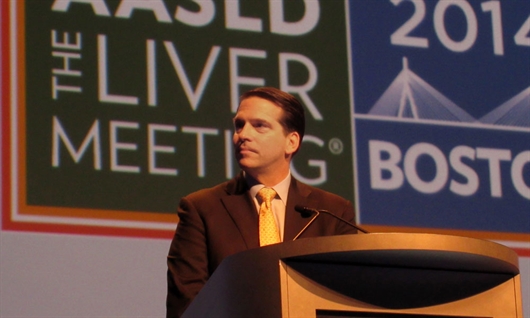
Mark Sulkowski, of Johns Hopkins University, speaking at the American Association for the Study of Liver Diseases (AASLD) Liver Meeting. Photo by Liz Highleyman, hivandhepatitis.com.
Merck is a little way behind other companies
in testing its interferon-free combination, but had hoped that its combination
would prove so potent that the duration of treatment could be reduced to six or
even four weeks if combined with sofosbuvir. That would make the combination
highly attractive, but a proof-of-concept study in 102 patients with
genotype 1 infection found that those treated for less than eight weeks already
showed higher rates of viral relapse after four
to eight weeks of post-treatment follow-up than people treated for eight weeks.
What these results mean for shortening the
duration of treatment is unclear, but looking on the positive side, the study
found that an eight-week course of treatment was sufficient to achieve a
post-treatment virological response at weeks 4 or 8 in 19 out of 20 people with
cirrhosis who started treatment.
These findings are early-phase research and
larger trials may not reproduce this success rate. A new trial called C-CREST
is planned to test 8-week and 6-week treatment regimens with a three-drug
combination.
Several other phase II studies of the Merck
protease inhibitor grazoprevir combined with its NS5A inhibitor elbasvir showed
that this combination was highly effective in genotype 1a or 1b infection,
curing 98% of people without cirrhosis after a 12-week course of treatment. An
8-week treatment course was slightly less effective even when ribavirin was
included in the regimen. This study included a sub-set of patients with HIV and
hepatitis C co-infection. In this group of patients, those who also received
ribavirin were more likely to be cured (97%, versus 87% without).
In people with cirrhosis and those who had a
null response to previous treatment – a hard-to-cure patient population – 12-
and 18-week regimens were tested. Very high cure rates (above 90%) were
achieved with or without ribavirin.
The regimen was well-tolerated in all patient
groups.
Merck is conducting phase III studies in
order to achieve licensing of a grazoprevir and elbasvir once-daily pill. These
studies will show whether it is possible to achieve very high cure rates for
patients who take treatment for 12 weeks. Merck hopes to obtain US marketing
approval for its hepatitis C combination in the second half of 2015.

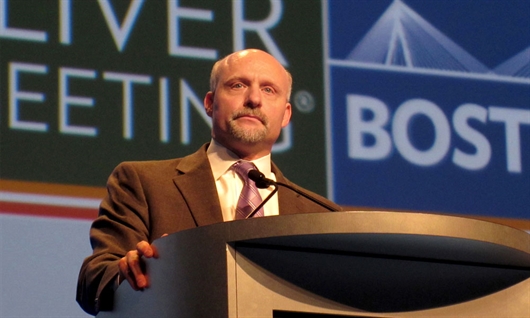
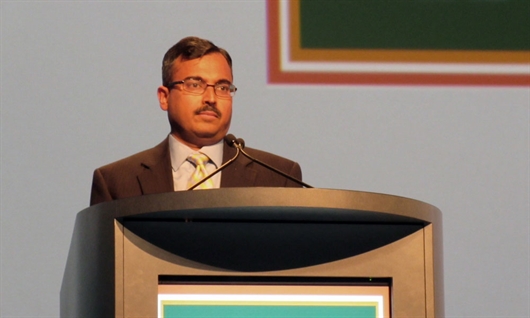


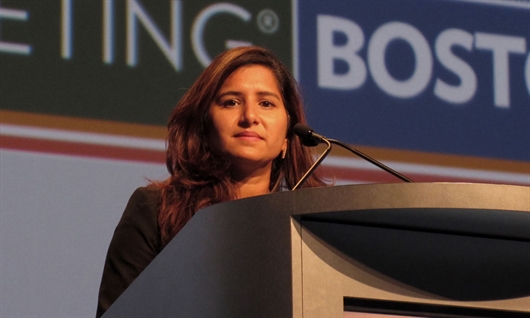
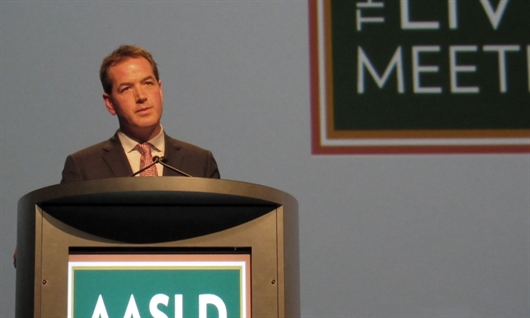
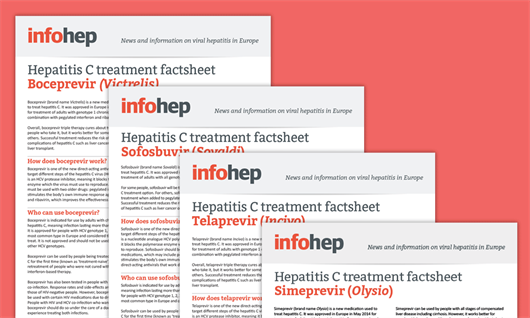
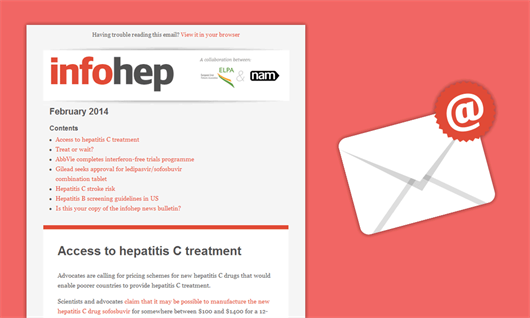

Connect with infohep on Facebook: Keep up to date with all the latest news and developments.
Follow infohep on Twitter for links to news stories and updates from infohep.org. Follow us at www.twitter.com/infohep.
Follow all the infohep news by subscribing to our RSS feeds.